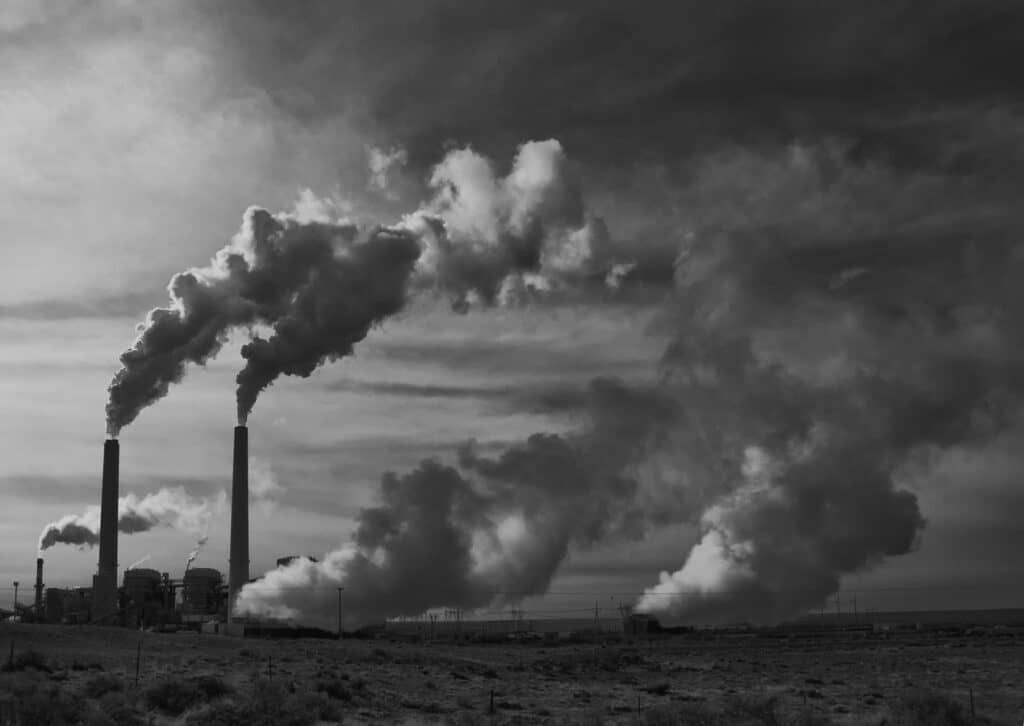“Coal’s last gasp” could keep world from achieving climate goals
By Fiona Harvey | May 2, 2022
 Coal-fired power plant near Joseph City, Arizona (Photo by
John Fowler, CC BY 2.0)
Coal-fired power plant near Joseph City, Arizona (Photo by
John Fowler, CC BY 2.0)
Editor’s note: This story was originally published by The Guardian. It appears here as part of the Climate Desk collaboration.
The number of coal-fired power plants under development around the world fell last year, but far too much coal is still being burned and too many new coal-fired power plants are planned for the world to stay within safe temperature limits.
Coal use appeared to be in long-term decline before the COVID-19 pandemic, but lockdowns around the world and economic upheaval drove an increase in new coal projects in 2020, particularly in China.
Last year, the total coal power capacity in development fell sharply again, by about 13 percent, from 525GW to 457GW, a record low for new plants under development, according to a report from Global Energy Monitor published on Tuesday. The number of countries planning new plants also fell, from 41 at the beginning of 2021 to 34 countries.
But these encouraging signs were outweighed by a slowdown in older coal-fired power stations being taken out of service. About 25GW of capacity was taken out—roughly equal to the amount of new capacity commissioned in China—and the amount of electricity generated from coal rose by 9 percent in 2021 to a record high, more than rebounding from a 4 percent fall in 2020 when COVID first struck.
The authors of the report concluded that “coal’s last gasp is not yet in sight”, despite countries agreeing at the COP26 UN climate summit last November to a “phase down” of coal. Last year, the International Energy Agency warned that no new exploration of fossil fuels of any kind could take place if the world was to limit global heating to 1.5 degrees Celsius above pre-industrial levels.
The continuing use of coal comes despite ever starker warnings from scientists in the latest assessment by the Intergovernmental Panel on Climate Change (IPCC), which concluded that the world would far exceed the 1.5 degrees Celsius limit without rapid reductions in greenhouse gas emissions.
Flora Champenois of Global Energy Monitor, one of the report’s authors, said: “The coal plant pipeline is shrinking, but there is simply no carbon budget left to be building new coal plants. We need to stop now. The latest IPCC report’s directive for a fighting chance at a livable climate is clear – stop building new coal plants and retire existing ones in the developed world by 2030, and the rest of the world soon after.”
The war in Ukraine has also taken a toll, pushing up gas prices and making coal cheaper by comparison, tempting companies and countries to burn more of the dirtiest fuel. But Lauri Myllyvirta, lead analyst for the Centre for Research on Energy and Clean Air, and another co-author of the report, said there could also be an upside in that many countries—particularly in Europe—were looking to reform their energy systems to accelerate clean energy and emphasise energy efficiency.
“It’s really important to note how much movement there has been towards clean energy and efficiency in response to the invasion,” he said.
Weakening demand in China was also dampening the prospects of a further coal revival, he added. The country’s response to the current resurgence of COVID-19, and to the uncertain global economy, would be crucial. “The question is whether China does go for the high-quality economic growth that the leadership has been talking about.”
China has commissioned more new coal-fired power than the rest of the world combined since the COVID-19 pandemic started, but the Chinese government’s plans for increasing clean electricity production by 2025 should mean that less coal is used, even if new coal-fired power plants are built there. But the building of such plants must be controlled much more strictly, according to the report, or growing over-capacity could hurt the country’s transition.
Globally, there are still more than 2,400 coal-fired power plants operating in 79 countries, making a total of nearly 2,100 GW of capacity. Only 170 plants are not covered by an eventual phase-out date or carbon-neutrality target, but too few are scheduled to retire in time to stay within 1.5 degrees Celsius.
Together, we make the world safer.
The Bulletin elevates expert voices above the noise. But as an independent nonprofit organization, our operations depend on the support of readers like you. Help us continue to deliver quality journalism that holds leaders accountable. Your support of our work at any level is important. In return, we promise our coverage will be understandable, influential, vigilant, solution-oriented, and fair-minded. Together we can make a difference.
Keywords: IPCC, clean energy, climate crisis, coal, coal use, coal-fired, ipcc report
Topics: Climate Change














